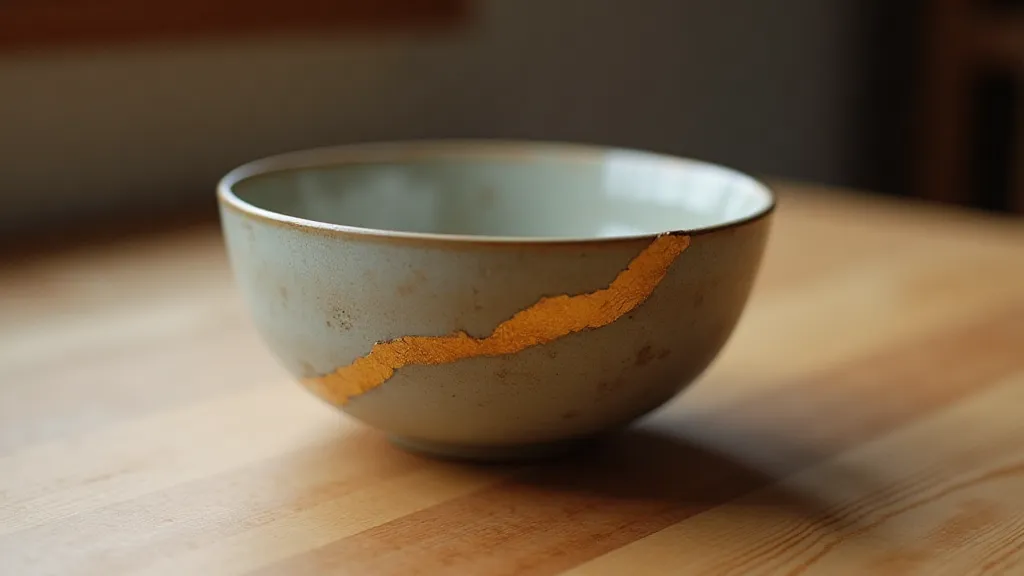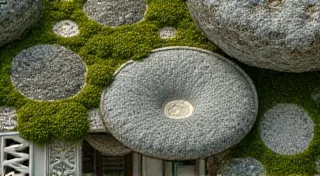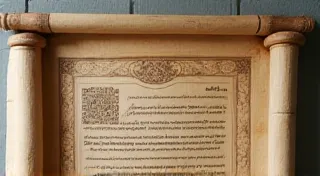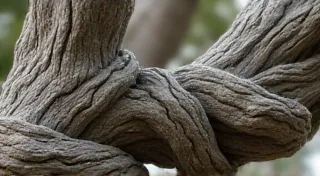Rebirth in the Crack: Finding Renewal from Writer's Block
There’s a particular resonance I find in old things. Not just their visual charm – though that’s undeniable – but in the stories etched into their surfaces, whispered by the slow accumulation of wear and the quiet resilience of survival. I’ve always been drawn to antique accordions, their bellows pregnant with silent music, their keys hinting at the melodies once played, the hands that caressed them. They speak of travels, of celebrations, of quiet evenings in dimly lit rooms.
Recently, I've felt a parallel feeling in my own creative practice. A stagnation. A block. The words wouldn't come, or worse, they felt flat, lifeless. Initially, I reacted with frustration. A sense of failure. I berated myself for a lack of inspiration, a depletion of ideas. It felt like the well had run dry.
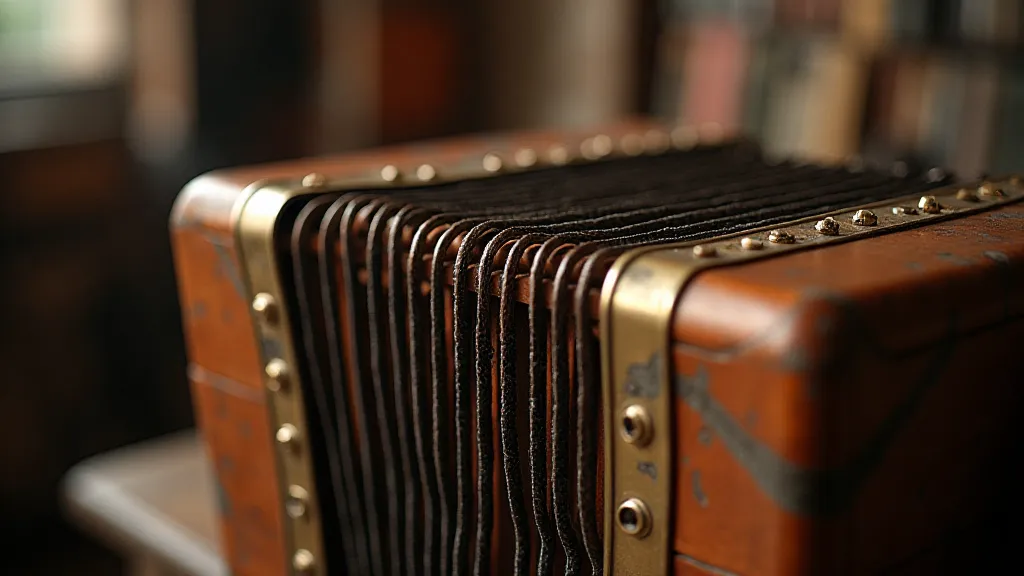
The Philosophy of Kintsugi: Embracing Imperfection
It was during this time of creative drought that I rediscovered the Japanese art of kintsugi. Meaning "golden joinery," kintsugi is the practice of repairing broken pottery with lacquer dusted or mixed with powdered gold, silver, or platinum. Unlike Western traditions that often strive to hide damage, kintsugi embraces it. The cracks are not flaws to be concealed; they are celebrated as integral parts of the object’s history, adding to its beauty and value. The repair becomes a visible testament to the object’s journey.
The philosophy behind kintsugi is rooted in wabi-sabi, a worldview that finds beauty in imperfection, impermanence, and simplicity. It’s a profound shift in perspective. Instead of seeking flawless perfection – an impossible and ultimately limiting goal – kintsugi suggests finding value in the marks of time, the traces of experience, the evidence of resilience.
From Brokenness to Storytelling: A Parallel to Writer’s Block
I began to see a direct parallel between the philosophy of kintsugi and my own creative struggles. My writer’s block wasn't a failure; it was a breakage. It was a necessary disruption in the creative process, an opportunity for something new to emerge. The frustration I felt wasn't a reflection of my inadequacy but a signal that it was time to acknowledge the break and, eventually, to mend it, not by erasing the “crack,” but by understanding and integrating it.
Consider a well-loved accordion. Its keys might be chipped, its bellows might have suffered a tear, its finish might be worn. These aren't signs of a poor quality instrument; they are marks of a life lived. They speak of countless melodies played, of the laughter and tears it has witnessed. A pristine, untouched accordion, while perhaps visually appealing, lacks the depth, the story, the character of a beloved, repaired one.
Similarly, my creative block, the seemingly insurmountable wall I faced, wasn't a dead end. It was an opportunity to excavate deeper, to reassess my approach, to find new sources of inspiration. It was prompting me to consider *why* the break happened in the first place. Was I pushing myself too hard? Was I trying to emulate someone else's style? Was I clinging to an idea that had run its course?
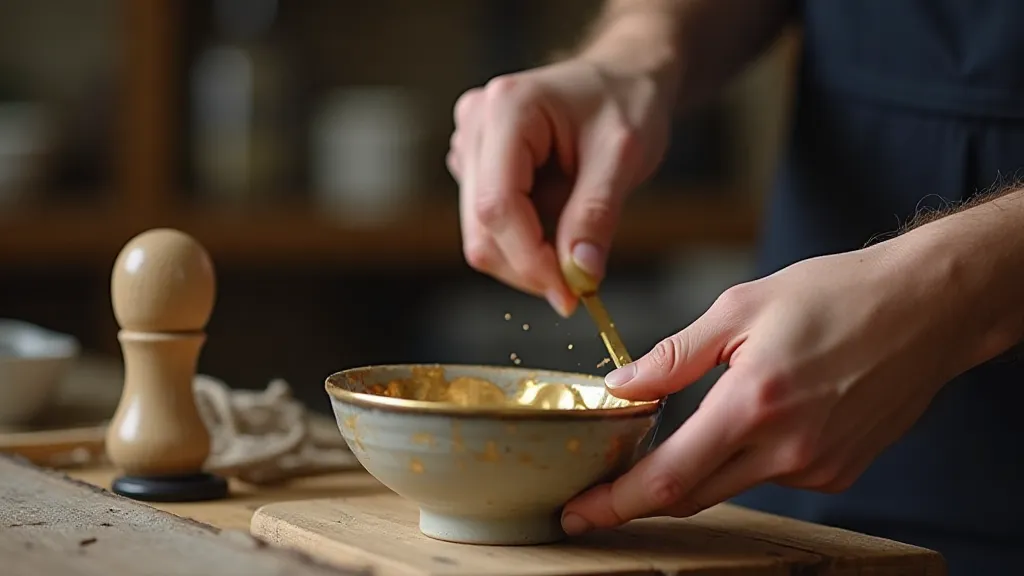
The Craftsmanship of Renewal: Lessons in Patience and Observation
The process of kintsugi itself is a testament to craftsmanship and patience. It's not about a quick fix; it’s about a deliberate and mindful repair. Each piece must be carefully cleaned, the cracks precisely aligned, the lacquer meticulously applied. It requires a deep understanding of the materials, a steady hand, and a willingness to embrace the imperfections that will inevitably arise.
This mirrors the creative process itself. Sometimes, the most profound breakthroughs come not from a sudden burst of inspiration but from a slow, deliberate process of observation, experimentation, and revision. It's about allowing the creative process to unfold naturally, without forcing it. It’s about being willing to embrace the “messiness” – the false starts, the dead ends, the moments of self-doubt – as essential parts of the journey.
Collecting antique accordions, or any antique, teaches a similar lesson. It’s not about finding the “perfect” specimen – the one without any blemishes. It’s about appreciating the history, the character, the story that each object embodies. It’s about understanding that the “imperfections” are what make them unique, what give them their soul.
Finding Gold in the Cracks: A New Perspective
I’ve come to realize that writer's block, like the broken pottery of kintsugi, isn’t something to be feared or avoided. It’s an opportunity to learn, to grow, and to discover new depths within our creative practice. It's a moment to pause, to reflect, and to consider how the “break” can be transformed into something beautiful and meaningful.
The golden lines of kintsugi aren't just about repairing something that's been broken. They're about celebrating its journey, acknowledging its resilience, and finding beauty in its imperfection. They are a visible reminder that even in our most broken moments, we have the power to find gold – to find renewal, to find inspiration, to find our way back to the music.
